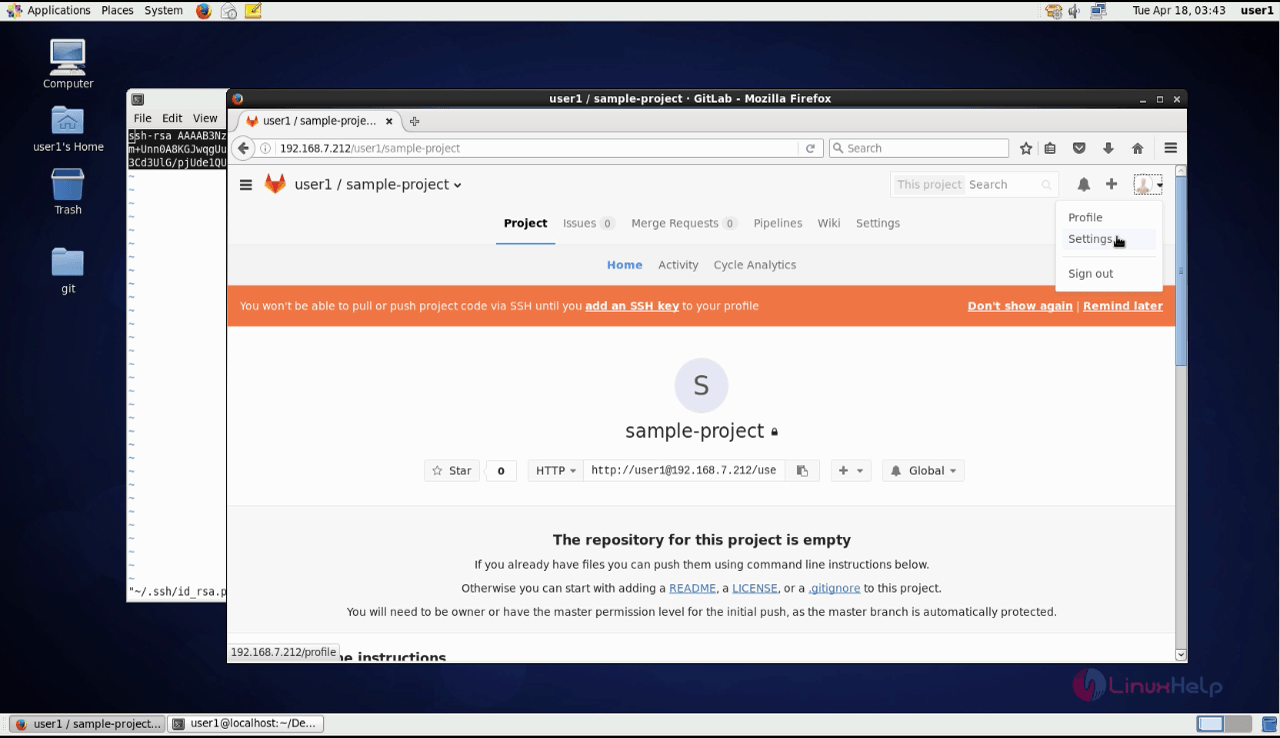- GitLab Tutorial
- Get Ssh Public Key Github
- Generate Ssh Public Key Gitlab Account
- Generate Ssh Public Key Gitlab Version
- Adding Ssh Key To Gitlab
- Ssh Public Key Authentication

I have two Gitlab accounts. On my old account I added an ssh-key that is located in /.ssh/idrsa.pub on my computer. Now I want to add another ssh-key for my new Gitlab account. How do I do this. How To Add An SSH Key In Your GitLab Profile. Hello Everyone. Welcome to CloudAffaire and this is Debjeet. In the last blog post, we have discussed how to create an issue, labels, and milestones in GitLab. System mechanic renewal key generator online. With both Tectia SSH and OpenSSH servers, access to an account is granted by adding the public key to a /.ssh/authorizedkeys file on the server. To install the public key, Log into the server, edit the authorizedkeys file with your favorite editor. Using PuTTYgen to generate an SSH key.
- Working with non-default SSH key pair paths. If you used a non-default file path for your GitLab SSH key pair, you must configure your SSH client to find your GitLab SSH private key for connections to your GitLab server (perhaps gitlab.com). For OpenSSH clients this is configured in the /.ssh/config file.
- Creating your SSH key pair; Adding your SSH public key to GitLab. Create and add your SSH key pair. It is best practice to use Git over SSH instead of Git over HTTP. In order to use SSH, you will need to: Create an SSH key pair; Add your SSH public key to GitLab. Creating your SSH key pair.
- Jun 01, 2016 In this GitLab video tutorial, we push a repo into our project. GitLab CE Tutorial #3 - SSH Key Setup & Pushing Our First Project LevelUpTuts. How to create SSH Key - Duration: 7:50.
- With both Tectia SSH and OpenSSH servers, access to an account is granted by adding the public key to a /.ssh/authorizedkeys file on the server. To install the public key, Log into the server, edit the authorizedkeys file with your favorite editor, and cut-and-paste the public key output by the above command to the authorizedkeys file.
- GitLab Basics
- GitLab Users and Groups
Get Ssh Public Key Github
 `
`- GitLab Issue Tracker
- GitLab Instance Management
- GitLab Continuous Integration
- Selected Reading
Generate Ssh Public Key Gitlab Account
Description
The SSH stands for Secure Shell or Secure Socket Shell used for managing the networks, operating systems and configurations and also authenticates to the GitLab server without using username and password each time. You can set the SSH keys to provide a reliable connection between the computer and GitLab. Before generating ssh keygen, you need to have Git installed in your system.
Orange box product key generator. That's how much we trust our unbeatable service.
Creating SSH Key
Step 1 − To create SSH key, open the command prompt and enter the command as shown below −
Generate Ssh Public Key Gitlab Version
It will prompt for 'Enter file in which to save the key (//.ssh/id_rsa):', just type file name and press enter. Next a prompt to enter password shows 'Enter passphrase (empty for no passphrase):'. Enter some password and press enter. You will see the generated SSH key as shown in the below image −
Adding Ssh Key To Gitlab
Step 2 − Now login to your GitLab account and click on the Settings option.
Step 3 − To create SSH key, click on the SSH keys tab at left side of the menu.
Step 4 − Now go to C drive, you will see the file with .pub extension which was generated in the first step.
Step 5 − Next open the key.pub file, copy the SSH key and paste it in the highlighted Key box as shown in the below image −
Ssh Public Key Authentication
Step 6 − Click on the Add Key button, to add SSH key to your GitLab. You will see the fingerprint (it is a short version of SSH key), title and created date as shown in the image below −